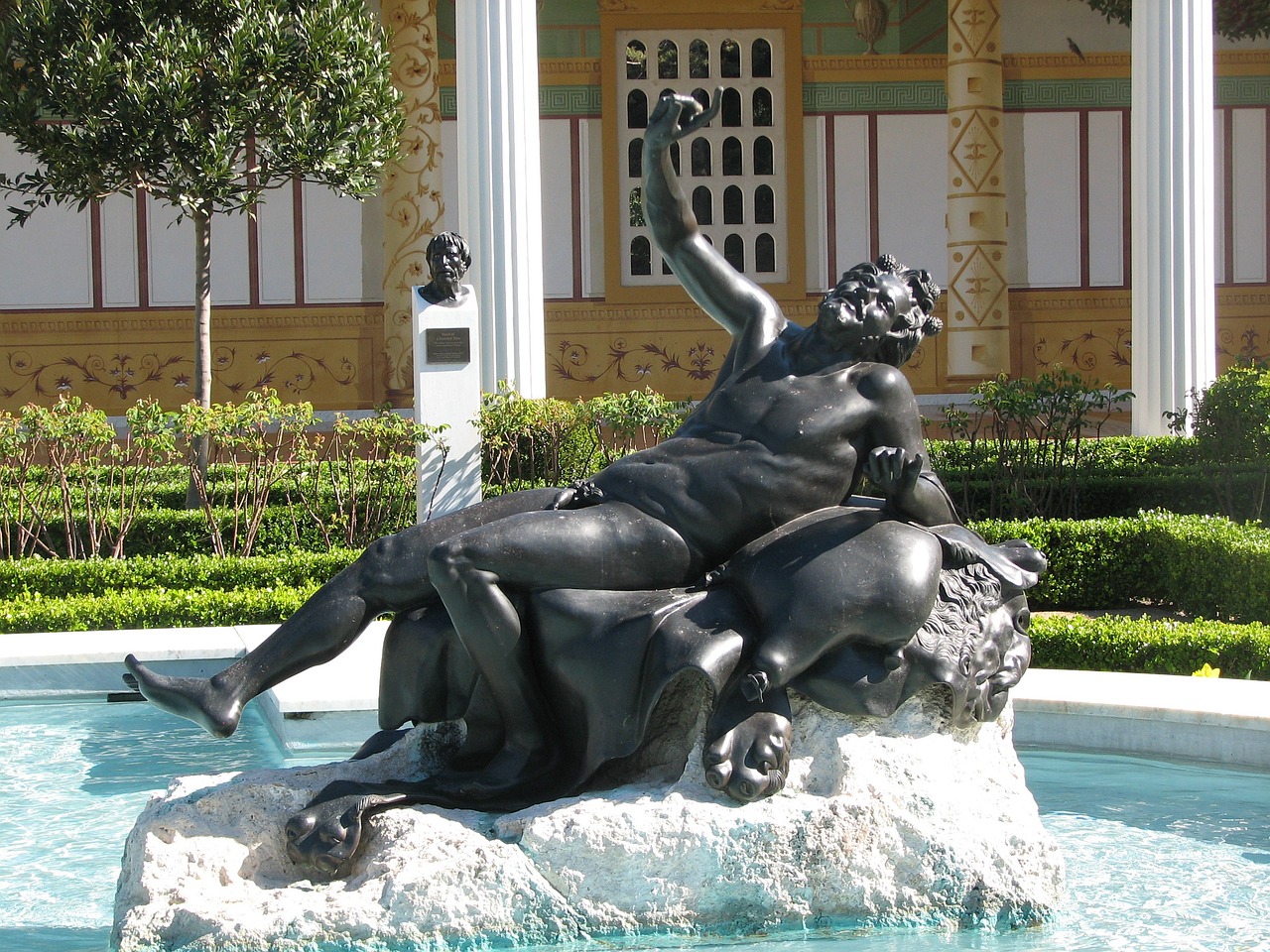Dionysus: God of Wine, Theatre, and Merriment
Dionysus, known in Roman mythology as Bacchus, epitomizes the essence of wine, joy, and theatre in ancient Greek culture. As one of the more vibrant deities on Mount Olympus, Dionysus stands out for his colorful legacy and tumultuous origins.
Birth and Early Life
In Greek mythology, Dionysus, born to Zeus and Semele, faced an unfortunate beginning; his mother perished before he could be born, due to Hera’s jealousy. Hera tricked Semele into asking Zeus to unveil his true divine form, a sight that overwhelmed her mortal frame. In the wake of this tragedy, Zeus took the unborn Dionysus, nurturing him within his thigh until the time of his birth. He was raised by satyrs and nymphs on Mount Nysa, with Silenus, a wise companion, serving as his primary educator, ensuring he remained shielded from Hera’s jealousy.
Both Homer and Hesiod recognized Dionysus as the ‘joy of men’ and ‘much-cheering,’ respectively, attributing this reputation to his endowment of wine to humanity. In one notable legend, Dionysus gifted Ikarios, a nobleman from Ikaria, with a vine. When Ikarios shared the resulting wine with some shepherds, they mistook the potent drink for poison and, in a fit of panic, killed him. Nevertheless, despite this grim commencement, wine rose to prominence in ancient Greek festivities. It was customary to mix wine with water during social gatherings, particularly at symposiums, where male participants lounged on couches and engaged in lively discussions about various topics.
Wild Celebrations and Greek Theatre
Dionysus is noted for his extensive travels, reaching as far as India, promoting his cult across Greece. His worship involved ecstatic rituals characterized by frenzied dancing and music, where followers sought to transcend their ordinary identities. This spirit of transformation also gave rise to theatre, as actors, like worshippers of Dionysus, immersed themselves fully in their characters. Notably, the priests of Dionysus were often granted esteemed positions in Greek theaters.
Encounters with Mortals
Dionysus’ narratives frequently intertwine with those of mortals. In one well-known tale, King Midas discovered Silenus, Dionysus’ close companion, intoxicated in his garden. In gratitude for his kindness, Dionysus granted Midas a wish, which led to complications when the king found that everything he touched, including food, turned to gold. The god ultimately helped Midas regain his life by advising him to bathe in the Pactolus River, providing a resolution to his plight.
Another famous story recounts how Dionysus was kidnapped by pirates ignorant of his divine nature. In response, he transformed the ship into a lush vine-covered vessel, filled the sails with wine, and ultimately turned himself into a lion, capturing the pirate captain. The remaining crew members, in terror, jumped overboard and transformed into dolphins, except for the helmsman, who had advised against taking the god captive. Later, Dionysus ended up on Naxos, where he fell in love with Ariadne, marrying her amidst the backdrop of a journey taken by Theseus.
Further mythological tales depict Dionysus convincing Hephaestus to release Hera from a cleverly designed throne, ensuring his status as a full Olympian god. Kings like Lycurgus and Pentheus faced dire consequences for denying Dionysus’s wild celebrations, with their ensuing madness and demise showcasing the repercussions of thwarting the god’s whims.
Worship and Cultural Significance
The worship of Dionysus gained significance in Athens starting from the 6th century BCE, evolving into annual festivals like Dionysia and, later, the Bacchanalia in Rome. The island of Naxos emerged as a significant sanctuary dedicated to Dionysus, with archaeological evidence indicating a longstanding veneration that dates back to the Mycenaean era. A sanctuary and a theater dedicated to Dionysus also existed in Athens, alongside a temple located in Dion, showcasing his impact in both religious and artistic spheres throughout ancient Greece and into the Roman period.
Artistic Representations
In both Archaic and Classical Greek art, Dionysus became a favored theme, commonly depicted alongside a troupe of satyrs and nymphs, who later transformed into maenads—wild female followers who, driven by fervor, hunted and consumed flesh. Artistic representations usually portray Dionysus as a bearded figure in earlier works, gradually transitioning to a more youthful depiction in later art. He is characterized by symbols such as the vine, thyrsos (an ivy-topped staff), kantharos (a wine vessel), or sometimes adorned with an ivy wreath or a panther’s pelt. His effeminate portrayal is evident in various artworks, including the famous east pediment sculpture of the Parthenon. Additionally, he captures a central role in Euripides’ tragic play, “The Bacchae,” set against the backdrop of Thebes.



